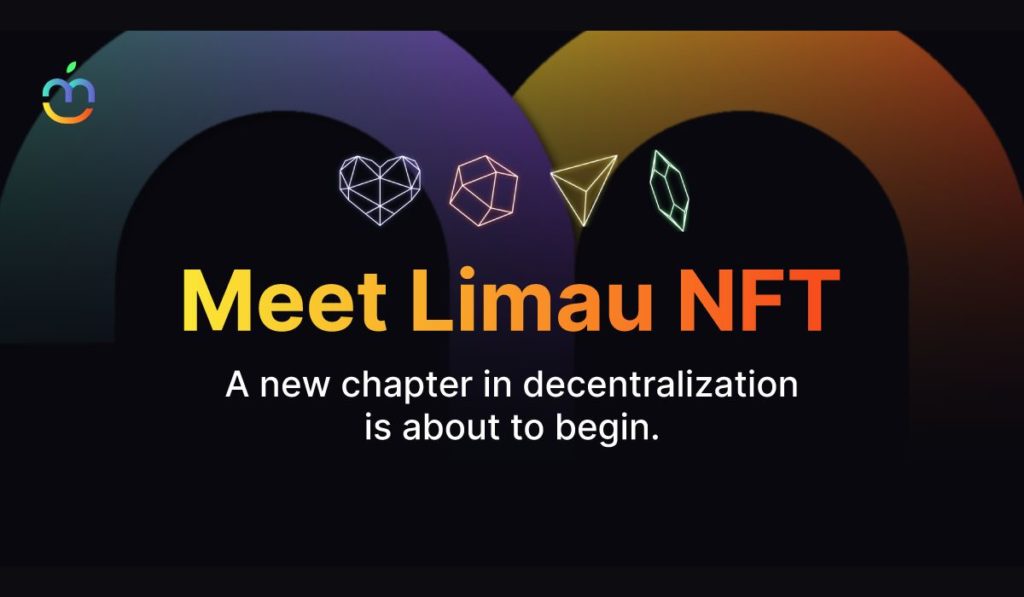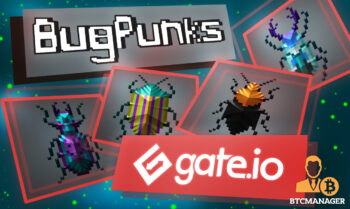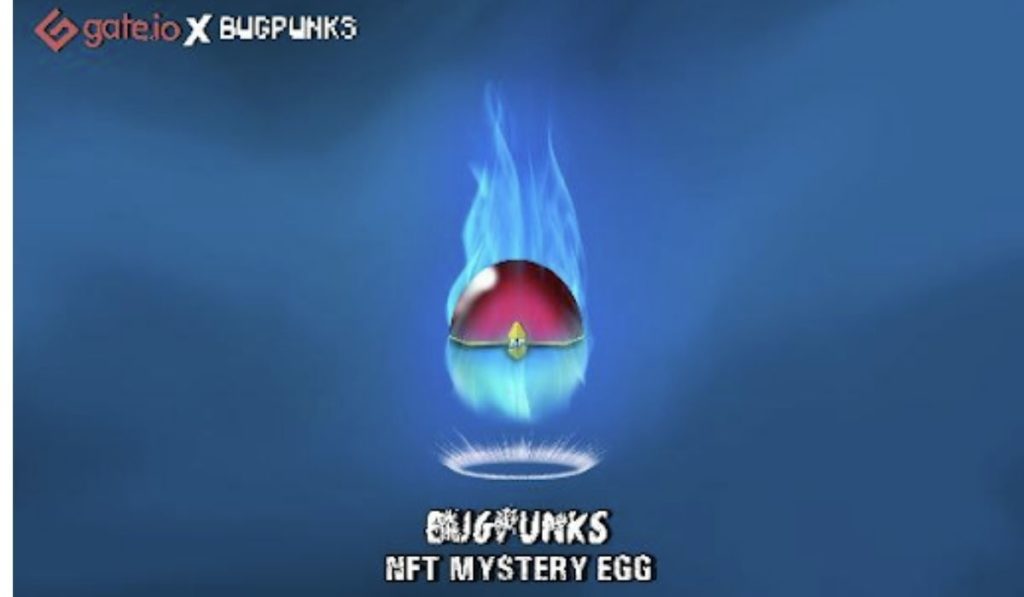
2024-5-29 03:17 |
Imagine a world where unique digital assets, unlike anything we’ve commonly traded before, become a driving force in the investment landscape. NFTs, or non-fungible tokens, represent this imaginative leap, transforming artwork, collectibles, and even tweets into valuable assets. They are not merely an offshoot of the cryptocurrency boom but a burgeoning market with their unmistakable identity.
Diving into the realm of NFTs requires understanding their distinct nature – how they differ starkly from cryptocurrencies, and why they’ve captured such widespread attention, especially in creative industries. As we witness NFTs reshaping the financial contours of the art world and gaming, a new frontier awaits the savvy investor.
In this comprehensive guide, we will analyze NFT investment strategies, delving into blockchain’s potential and laying out a blueprint for cultivating a diverse and thriving digital portfolio. This journey will equip you with the knowledge to identify the gems among the virtual, secure your digital treasures, and seize opportunities for passive income in a market rich with innovation.
Understanding Non-Fungible Tokens (NFTs)Non-fungible tokens, or NFTs, stand apart from typical cryptocurrencies due to their unique digital footprint that cannot be replicated or substituted one-for-one. At their core, NFTs represent ownership of distinctive items—whether digital art, music, or any creative work—enshrined on a blockchain. This introduces a new aspect to asset ownership: scarcity and authenticity. NFTs inherently lack intrinsic value and do not yield dividends or interest like traditional investments might. Their value is largely driven by market demand and the personal satisfaction they offer to their holder. Therefore, the engagement with NFTs requires a combination of passion for the asset class and shrewd investment strategy, as the potential for fluctuation in their value is significant.
How NFTs are Different from CryptocurrenciesCryptocurrencies and NFTs both utilize blockchain technology for secure, immutable transactions but harbor distinct functions. Where a cryptocurrency like Bitcoin represents a form of digital currency that can be exchanged on a one-to-one basis with another Bitcoin, NFTs are unique and non-interchangeable. Each NFT possesses a digital ledger entry on the blockchain that certifies its authenticity and originality, reducing the likelihood of fraud and enhancing transparency. While the tangible aspects of assets represented by NFTs may not always hold a physical form, their value is hinged on the principle of rarity and proof of provenance, creating a significant distinction between them and more fungible cryptocurrencies.
Exploring the Popularity of NFRsThe meteoric rise of NFTs in 2021, particularly within the domain of digital art, underscores their growing popularity. This phenomenon has empowered artists globally, utilizing blockchain technology to reach art collectors in new, decentralized ways. Tracking the pervasiveness of NFTs via tools like Google Trends can provide a gauge of their appeal and optimal times for acquisition. High market capitalization projects in this space denote a vibrant market presence, often justifying premium pricing due to a project’s market strength and recognition. Additionally, a robust and involved community, evidenced by numerous unique holders, can enhance the marketing and value of an NFT. The commitment of these holders, notably the ones with ‘diamond hands,’ can indicate a project’s long-term potential.
NFTs in the Art WorldThe incorporation of NFTs in the art world transforms how creators distribute and monetize their work. This democratic framework liberates artists from the confines of traditional art market intermediaries, allowing them to transact directly with buyers. Furthermore, NFTs create avenues for receiving royalties from subsequent sales, ensuring artists benefit from future appreciations in value. While high-profile NFT sales often dominate headlines, numerous transactions occur at much more modest price points. Community involvement and the exclusivity associated with collections like CryptoPunks or Bored Ape Yacht Club further drive up their desirability and value, emphasizing the unique dynamics of the NFT art market.
NFTs in the Gaming IndustryVenturing into the gaming industry, NFTs have transformed the way players interact with digital environments. Ownership of in-game NFTs—ranging from artwork to virtual fashion—creates an unprecedented layer of immersion and personal investment. Renowned gaming NFTs, such as CryptoKitties, exemplify the niche’s popularity, leading to a need for secure and certified platforms for trading. Moreover, NFTs inject longevity and a rare quality to digital gaming items, enhancing player experience. The intersection of NFTs with Decentralized Finance (DeFi) reflects the growing versatility of NFTs, transcending beyond mere collectibles to become integral elements of game design and economics.
Source: Depositphotos
The Potential of Digital Assets and Blockchain TechnologyUnlike traditional digital transactions, NFTs allow for the global transfer and easy exchange of tokenized assets, breaking down geographical barriers and providing inclusive investment opportunities. As NFTs are built on blockchain networks like Ethereum, each token carries a digital verification of asset ownership, significantly boosting the security for owners.
Understanding the allure of NFTs hinges on appreciating their uniqueness compared to mainstream cryptocurrencies like Bitcoin and Ethereum. Whereas those assets are mutually interchangeable (“fungible”), NFTs are unique (“non-fungible”), with each token representing a distinct asset or piece of content. For investors, this presents a novel opportunity to diversify investment portfolios by including tokenized assets that are not tied to the traditional financial markets, potentially minimizing risk through allocation diversity.
The Rise of Digital AssetsDigital assets have undergone a radical evolution, especially with the advent of NFTs. These special digital tokens have sparked a revolutionary shift, providing unique opportunities for asset ownership – from artworks and music to in-game items and digital collectibles. Their integration into various platforms, particularly games and applications, has become increasingly prevalent, enhancing user experience through ownership and tradeability of in-game assets and digital goods.
Accessing the NFT market has become more mainstream, thanks to platforms such as OpenSea, Rarible, and the sports-focused NBA Top Shot, which have emerged as solid foundations for exploring the diverse offerings within this space. These platforms enable secure trading and discovery of these assets, fortifying investor confidence through transparent verification of authentic ownership.
How Blockchain Enhances the Value and Security of Digital AssetsBlockchain is the bedrock upon which the value and security of NFTs rest. By digitally signifying ownership on an immutable ledger, blockchain technology ensures each NFT is secure and unique, enhancing its value to collectors and investors. This technology provides a layer of transparency for asset ownership, crucial in a market where authenticity and provenance are of paramount importance.
NFT marketplaces and cryptocurrency exchanges have streamlined the process of acquiring tokenized assets, making them publicly accessible and fostering an environment of transparent transactions. For example, the Ethereum platform mandates the use of its native cryptocurrency, ether, for transactions, which is recorded on the blockchain, guaranteeing traceability and authenticating each NFT. Moreover, prominent auction houses such as Sotheby’s and Christie’s have adopted private purchase options for tokenized assets, tapping into blockchain’s robust security features to safeguard transactions particularly for high-value NFTs, thereby endorsing the potential of digital assets as a credible and secure form of investment.
Developing a Successful Trading StrategyCrafting a shrewd trading strategy in the NFT arena demands an in-depth comprehension of how non-fungible tokens diverge from cryptocurrencies. NFT trading strategies can range from short-term flipping, where traders quickly sell acquired NFTs for a profit, to seeking out and investing in the works of emerging artists poised for success. It is essential to consider factors including scarcity, collector demand, creator reputation, and broader market trends, as these can have a substantial impact on NFT valuation. As with any investment, it’s crucial to only commit funds one can afford to lose and to remain vigilant regarding the NFT market’s price volatility. Moreover, being flexible and ready to re-evaluate and adjust strategies as market conditions shift is indispensable for maintaining an effective and sustainable NFT trading practice.
Assessing Market Trends and DynamicsUnderstanding and navigating market trends and dynamics is paramount for successful NFT investment. Keenly observing which categories of NFTs – such as digital artwork, collectibles, or gaming items – are gaining traction can provide invaluable insights. High trading volumes indicate robust market activity and liquidity, which are positive signs for traders. In contrast, low volumes may suggest dwindling interest or a potentially stalling market. Sentiment analysis tools can be leveraged to capture the market’s mood, allowing investors to shape well-informed strategies. Furthermore, the fundamental security and transparency afforded by blockchain technology play a significant role in influencing market behavior, with enthusiastic community engagement and ongoing developer updates offering glimpses into the viability of NFT projects.
Identifying High-Potential Digital CollectiblesWhen pinpointing digital collectibles with high potential, astute traders pay close attention to diverse asset types. Timing entries and exits requires judicious consideration of the market trends and news events that dictate asset performance. Expansive marketplace understanding is also key, as every platform has its own unique dynamics affecting trade. Ensuring the authenticity and value of an NFT is fundamental; this is achieved through verification of ownership rights and adherence to tax reporting requirements relevant to the investor’s jurisdiction.
Diversifying Your NFT PortfolioIn the unpredictable world of NFT trading, diversification is your bulwark against potential downfalls of individual assets. Spreading your investment across several types of NFTs can help mitigate the effect of poor performers on your portfolio’s health. It’s a risky move to place all your faith – and capital – in a single, high-profile project, which may falter in achieving market traction. Emulating the diversification seen in traditional investment, strategies in the NFT market aim to reduce risk exposure while enhancing stability. Constructing a robust NFT portfolio involves exploring a spectrum of categories, such as music, domain names, virtual merchandise and supporting a mixture of creators to avoid dependency on a singular source.
Setting Investment GoalsClearly defined investment goals enable you to outline what you are striving to achieve, whether aiming for quick profits or nurturing growth over the long term. Determining time horizons is equally critical, shaping the duration assets are to be held and ensuring that investment moves are in sync with larger financial goals. These goals facilitate the selection of NFT ventures that align with your appetite for risk and personal financial aims. Adopting realistic time frames allows for strategic flux in accordance to the trends and evolution within the NFT space. Striking a balance between your objectives and the timing of your commitments is clinching for curating a diverse, resilient NFT portfolio in line with your overarching fiscal plans.
Source: Depositphotos
Safeguarding Your Digital InvestmentsSafeguarding your NFTs is paramount. Digital wallets serve as the backbone for secure storage and management of these unique assets. They’re not just a place to keep digital collectibles – they’re a fortified vault where your ownership rights are securely protected under layers of encryption.
To ensure utmost security, it’s vital to refrain from divulging sensitive information. Your digital wallet’s private keys are akin to the most intimate secrets; sharing them compromises the integrity of your investments. Proactively enabling two-factor authentication adds an additional layer of defense, fortifying your digital trove against unauthorized access.
Monitoring your wallet activity stands as a constant vigil against the shadows of the digital world, where suspicious transactions may signal malicious intent. To navigate this environment with confidence, selecting a digital wallet that aligns with your security needs is not just smart – it’s an investment in peace of mind.
What is a Digital Wallet?At the heart of every NFT transaction lies the digital wallet – an indispensable tool for any digital investor. Much like a physical wallet stores cash and cards, a digital wallet is designed to securely manage your NFTs and cryptocurrency tokens. It’s where the private keys, which prove your ownership of these digital items, reside.
Digital wallets go beyond mere storage; they’re the operational nexus for your NFT purchases, sales, and transfers. Crafting transactions within the blockchain network, your wallet is essential in making sure that these exchanges are carried out securely and efficiently, safeguarding the integrity of each digital item it holds.
Types of Digital Wallets for NFTsIn the realm of secure transactions, not all wallets are forged equal. Leading the pack in the NFT space are MetaMask, Trust Wallet, Solflare, Coinbase Wallet, Ledger Wallet, and Enjin – each a bastion of security with unique features to cater to different facets of a user’s needs.
MetaMask, famed for its ease of use and Ethereum-centric capabilities, and Trust Wallet, with its broad cryptocurrency support, stand as go-to choices for many. For hardware wallet aficionados, Ledger provides a physical barrier to digital threats. While Coinbase Wallet caters to those who prefer an all-encompassing ecosystem linking exchange and wallet services. Each wallet has its unique characteristics, but the goal is universal – to offer a secure, seamless NFT transaction experience.
Security Measures for Protecting Your Digital AssetsThe security of your digital wallet is the linchpin in protecting your NFTs. Utilizing wallets acclaimed for their unyielding security features, such as MetaMask or MathWallet, is the first line of defense. These wallets are equipped with a medley of protective measures, from encrypted storage to biometric security protocols, all designed to fortify your digital assets.
To protect your NFTs and other crypto holdings, vigilance is key. Phishing attempts, a rampant hazard in the cyber world, require a discerning eye to sidestep. By never sharing private keys or falling for the guile of fraudulent communications, you’re taking proactive steps to reinforce the ramparts guarding your virtual treasures.
Best Practices for Managing and Organizing Your NFTs in a Digital WalletA well-managed digital wallet is the cornerstone of effective NFT investments. Spearheading this effort is the implementation of rigorous security practices. Two-factor authentication is a protagonist in this tale, providing a dynamic shield for your wallet. Coupled with meticulous organization – such as segregating investments into different wallets for enhanced risk management – the art of organizing your NFTs becomes second nature.
Balancing security with functionality, modern digital wallets offer the tools you need to manage your digital collectibles efficiently. From marketplace analytics to tracking tools, these platforms aid in informed decision-making for your portfolio. Moreover, staying attuned to the tax-reporting requirements congruent with NFT investments arms you with the knowledge to navigate fiscal responsibilities astutely.
Source: Depositphotos
Generating Passive Income through NFT InvestmentsNFT investment strategies can extend beyond the immediate buying and selling of digital assets. The integration of NFTs within decentralized finance (DeFi) is creating unprecedented ways to generate passive income. Investors are now exploring yield farming in the NFT market—a method that involves staking or providing liquidity to earn additional tokens. By participating in pre-sales and leveraging yield farming, traders can unlock new revenue streams without parting with their digital collectibles.
Engagement in such strategies allows traders to benefit from the burgeoning ecosystem while holding onto their unique digital items. The rewards received can be reinvested for profit, redefining the essence of digital asset investment and creating a self-sustaining model of wealth generation within the NFT space.
Staking NFTs for Yield GenerationStaking has emerged as a popular method for generating yield in the NFT domain. It involves committing your NFTs to a smart contract for a certain period, during which you earn rewards. These rewards come in the form of additional tokens, or sometimes even more NFTs, incentivizing long-term holding while generating an income stream.
NFT projects are beginning to recognize the value of staking systems as a way of enhancing their platform’s stability and rewarding their community. By staking, traders not only can secure a potential appreciation of their NFTs over time but also enjoy the “dividends” paid out as a part of this process.
Renting Out or Licensing Your Digital CollectiblesThe utility of NFTs is further unlocked through renting or licensing. Users can lend their digital items, similar to renting real-world properties or autos, in exchange for a fee. This is particularly prevalent in gaming ecosystems where in-game assets, like characters or gear, are valuable to other players’ experiences.
Platforms such as Axie Infinity’s Marketplace facilitate the concept of NFT Renting, allowing users to monetize their in-game properties. It’s a vibrant revenue stream within the NFT ecosystem, serving as an attractive method for digital asset holders to capitalize on their investments.
NFTs as Collateral for LoansIn the rapidly evolving landscape of DeFi, NFTs are becoming accepted as collateral for loans. By pledging your digital assets, you can gain liquidity without selling them, which is particularly useful in maintaining your investment positions or covering immediate financial needs.
The process involves NFT lending protocols where investors can provide capital against NFT collateral. While it offers the potential for yield, it’s imperative to recognize the associated risks, such as asset volatility and flash loan attacks. Investors must tread carefully, as the risk of liquidation persists in the event of price drops, which could lead to significant losses.
By tapping into these strategies, NFT holders have a fascinating array of options to cultivate passive income streams while capitalizing on the digital asset class’s unique properties. It is essential, however, to take a measured approach, factoring in the market dynamics and the potential risks to ensure that these strategies align with one’s risk tolerance and investment objectives.
Understanding the Role of Smart Contracts in NFTsWhile smart contracts have streamlined the way investors manage NFTs, it’s essential to be cognizant of the risks involved. Like any technology, smart contracts are susceptible to vulnerabilities that hackers can exploit. These breaches could lead to attacks on DeFi networks and subsequent theft of digital currencies of substantial worth.
Investors must understand the digital agreements — or smart contracts — that govern NFT ownership. These contracts are not only pivotal in verifying ownership but also in enforcing terms and conditions automatically upon trading NFTs on secondary markets. Verifying the reliability of these contracts and the platforms that deploy them is vital in making informed NFT investment decisions.
To mitigate the risk associated with individual NFT assets, investors can consider NFT-linked funds and ETFs. Products like Defiance Digital Revolution ETF and ProShares Bitcoin Strategy ETF offer diversification within the blockchain and NFT asset classes, spreading potential risks across a broader portfolio.
Another key benefit of smart contracts is their ability to enforce royalty payments upon the resale of NFTs. Automatic royalty distribution is a game-changer for creators, ensuring they get their fair share from ongoing trades on secondary markets.
In conclusion, smart contracts embedded in NFTs showcase an array of functionalities, from securing transactions to automating complex processes like royalty payments. As the NFT marketplace continues to expand, understanding the intricacies of smart contracts becomes ever more important, allowing investors to safely navigate and capitalize on this innovative digital asset class.
Featured Image: Depositphotos
The post Mastering NFT Investment Strategies: A Comprehensive Guide to Building Your Portfolio appeared first on NFT News Today.
origin »NFT (NFT) на Currencies.ru
|
|















